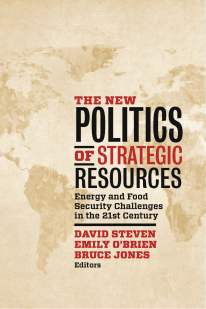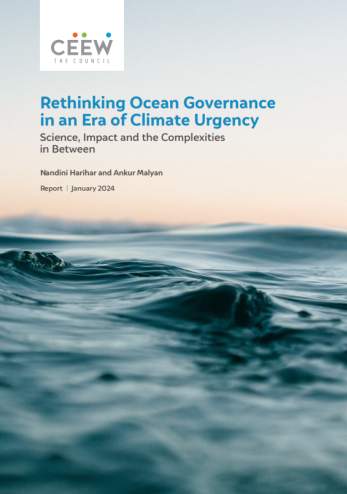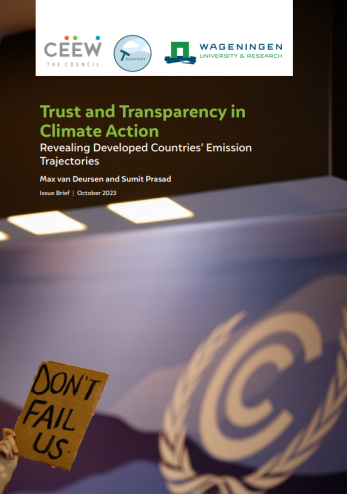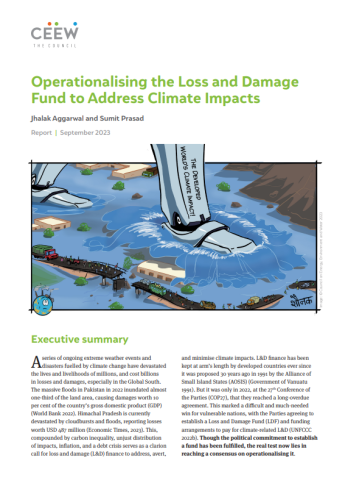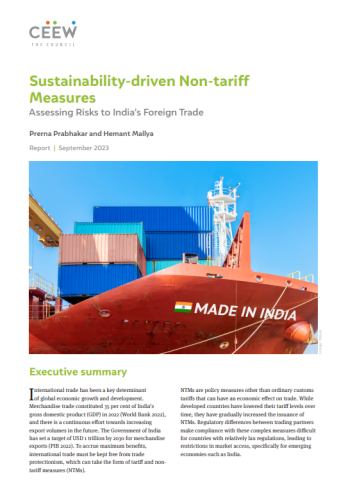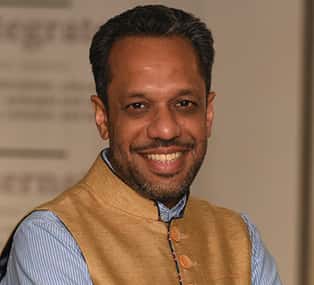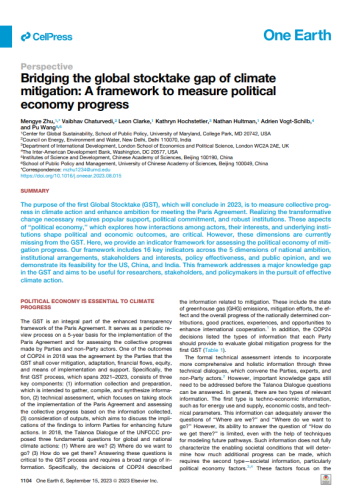Book Chapter
Materials, Markets, Multilateralism
A Strategic Approach to India’s Resource Challenges
David Steven, Arunabha Ghosh
November 2014 | International Cooperation, Technology Futures
Suggested citation:Steven, David, and Arunabha Ghosh. 2014. “Materials, Markets, Multilateralism: A Strategic Approach to India’s Resource Challenges” In he New Politics of Strategic Resources: Energy and Food Security Challenges in the 21st Century, edited by David Steven, Emily O’Brien, and Bruce James, 40-70. Washington: Brookings Institution Press
Overview
The book chapter examines the political dimensions of strategic resource challenges at the domestic and international levels. It reviews the resource and environmental challenges facing India over the next 20 years, focusing in particular on their political and geopolitical dimensions. It also highlights the drivers of change and possible trajectories for India’s domestic and international policy on these issues. The chapter further explains the options for future engagement on strategic resources and climate change, offering concrete opportunities for the Indian government to deepen its engagement and build stronger partnerships and governance arrangements with other countries.
Key Highlights
- India has a strong national interest in well-functioning commodity markets. Its growing presence as a “rule shaper” and its willingness to engage on multilateral, rather than a solely bilateral, basis offers the potential to influence both the design of robust international regimes for resource security and provision of global environmental public goods.
- India could play an important role in developing governance frameworks that increase the coherence of rules across institutional regimes relating to resources, the environment, trade, and security.
- Strategic resources and the environment will play a key role in shaping India’s future. Over the next 20 years,
- Energy security will be a defining challenge for India.
- India is not on track to secure its energy needs.
- Poverty will remain a key driver of policy on resources.
- India’s environmental vulnerabilities are increasing.
- The interaction between India’s resource and environmental challenges will become more complex.
- Even under an aggressive, and politically infeasible scenario of global climate stabilisation, India will consume around sixty per cent more energy in 20 years than it does now.
- When it comes to oil, India is exposed to both supply risks (war, strikes, or political upheavals in oil exporters and deliberate blockades of supplies to India) and market risks (higher prices, but in particular price volatility). For India, oil will increasingly become one of its most important sources of exposure to broader geopolitical volatility.
- India faces a tough challenge if it is to find the energy resources needed to meet its current target of nine per cent annual GDP growth. In the short term, at least, the economic impacts of energy scarcity seem likely to worsen, as growing numbers of middle-class consumers compete with industrial users of resources.
- Energy poverty is expected to be far from solved by 2030. By that year, Indians are expected to consume only between a third and half of the average global per capita energy use.
- As poverty in China and South Africa continues to fall, India will increasingly be the only country in the G-20 with a significant proportion of its citizens living in absolute poverty and suffering from hunger. This will provide India an incentive to emphasise on the links between access to resources and poverty reduction.
- Market and governance failures, meanwhile, will take time to resolve, requiring deep-seated and politically costly reforms to natural resource ownership and allocation, pricing, environmental management, and regulatory oversight.
- Global drivers will help to frame what is possible within India’s domestic policy environment. The following trends are evident, and many have the potential to make progress at home harder to achieve:
- India’s exposure to a breakdown in global energy markets will continue to increase.
- On food, India’s size gives it considerable market power.
- Transitional water stress will prove manageable in the short term.
- The intersection between maritime and energy security is a potentially serious source of friction with India’s neighbours.
- Climate change politics will be increasingly challenging for India.
- Both India and its allies have an incentive to look for opportunities for international cooperation on resource and environmental issues that will strengthen global regimes while making India’s search for domestic solutions more fruitful. Greater international engagement can help to accomplish the following:
- Increase understanding of the risks that India faces.
- Provide India with a platform to share potential solutions with its partners.
- Provide a basis for Indian leadership in the G-20.
- Influence the post-2015 development agenda.
India could play an important role in developing governance frameworks that increase the coherence of rules across institutional regimes relating to resources, the environment, trade, and security.




